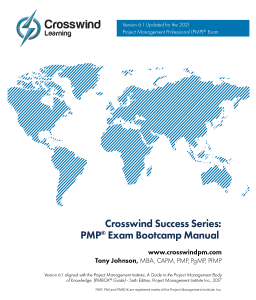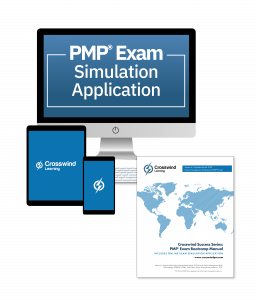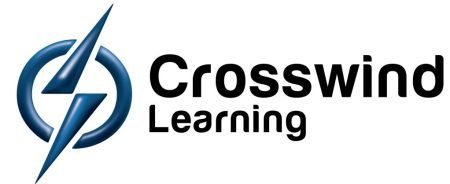Free PMP Terms and Definitions
Understanding common project management terms can be a challenge for all project managers. To help you understand those terms and definitions Crosswind Project Management has created a free to use glossary to help in your pmp training. In this page you will find the terms and definitions associated within the component areas of framework to get a better understanding of how this process works and relates to project management.
Sign Up for a daily free Tip of The Day!
| Term | Definition |
|---|---|
| Activity | A unique, scheduled segment of project work that typically has an associated cost, duration, and resources; sometimes called a task |
| Activity Attributes | The characteristics of an activity that include activity codes, predecessor activities, successor activities, logical relationships, leads and lags, resource requirements, imposed dates, constraints, and assumptions |
| Activity Dependency | The relationship between two activities or between an activity and a milestone, also known as a logical relationship |
| Activity Duration Estimate | The projected duration of an activity |
| Activity List | A listing of scheduled activities, with such details of a description, identifier, and scope of work, used to ensure that team members comprehend the work that will be performed during the project |
| Backward Pass | A network diagramming method that calculates the late start (LS) and late finish (LF) dates of each activity by working backward through the schedule from the project completion date |
| Bar Chart | A graphical representation of schedule-related information. Typically, schedule activities or work breakdown structure components are displayed vertically on the far left of the chart, dates are displayed horizontally across the top of the chart, and activity duration's are displayed as date-placed horizontal bars. Also see Gantt chart. |
| Crashing | A compression technique to shorten the duration of the schedule, typically by adding additional resources to critical path activities |
| Critical Path | The progression of activities that comprise the longest path through the project; used to ascertain the project duration |
| Critical Path Activity | An activity on the critical path of a project schedule |
| Critical Path Method | A technique used to assess minimum project duration and ascertain any schedule adaptability that appertains to logical network paths |
| Dependency | The relationship between two activities or between an activity and a milestone, also known as a logical relationship |
| Discretionary Dependency | An activity that the project manager (or other decision maker) arbitrarily chooses to designate as a dependency; for example, making the reservation of a hotel room dependent on the purchase of a plane ticket; also known as soft logic |
| Duration (DU or DUR) | The time, exclusive of holidays or other days in which business is not conducted and typically measured in workdays or workweeks, required to complete a specific activity or WBS component |
| Early Finish Date (EF) | The earliest possible date for an activity to be completed based upon the schedule network logic |
| Early Start Date (ES) | The earliest possible date for an activity to be started based upon the schedule network logic |
| Effort | The amount of labor (typically measured in hours, days, or weeks) required to complete an activity or WBS component |
| Elapsed Time | The actual time to complete a task. |
| External Dependency | A relationship between project activities and non-project activities |

Crosswind’s 35 Contact Hour PMP Exam Prep Course Bundle offers the best PMP certification training. This 4 day course is taught by author Tony Johnson will help you pass the PMP Exam the first time via the Crosswind Way!
| Term | Definition |
|---|---|
| Fast Tracking | A schedule compression approach that puts some activities in parallel, instead of in series to shorten pieces of, or the overall project duration. |
| Finish Date | A point in time related to the completion of a schedule activity and typically qualified as actual, planned, estimated, scheduled, early, late, baseline, target, or current. |
| Finish-to-finish (FF) | A dependency that requires the completion of a predecessor activity prior to the completion of the successor activity |
| Finish-to-start (FS) | A dependency that requires the completion of a predecessor activity prior to the start of the successor activity |
| Float | The amount of time an activity can be delayed without delaying successor activities or the project completion date |
| Forward Pass | A network diagramming method that calculates the early start (ES) and early finish (EF) dates of each activity by working forward through the schedule from the project inception date or a specific point in time |
| Free Float | The amount of time an activity can be delayed without violating any schedule limitation and without delaying the early start date of successor activities |
| Gantt Chart | A graphical representation that registers activities on the vertical axis and depicts the activity durations, based on their start and finish dates, on the horizontal access; also known as a bar chart |
| Internal Dependency | A relationship between multiple project tasks. |
| Lag | The amount of time, predicated on the start or finish of a predecessor activity, a successor activity must be delayed |
| Late Finish Date (LF) | The latest possible date for an activity to be completed based upon the schedule network logic, the project finish date, and schedule limitations |
| Late Start Date (LS) | The latest possible date for an activity to be started based upon the schedule network logic, the project finish date, and schedule limitations |
| Lead | The amount of time, predicated on the start or finish of a predecessor activity, a successor activity can be moved up |
| Mandatory Dependency | A relationship that is necessitated by virtue of a contractual requirement or the work itself |
| Merge | A coming together (convergence) of activities on a network diagram |
| Milestone | A meaningful project event typically preceded by a series of activities that lead to its completion |
| Milestone Charts | A summary chart that itemizes key milestones over time on the project. |
| Milestone List | A list of significant events in the project that may be designated as mandatory or optional |
| Milestone Schedule | A summary timetable that itemizes key milestones |
| Near-critical Activity | Any schedule network diagram activity that is close to zero slack |

Crosswind 2022 PMP Exam Bootcamp Manual
The PMP Exam Bootcamp Manual provides a foundation for the PMP Exam. This manual comes with a complete 200 question exam simulation application and 50/100 question ITTO exams created with over 1,400 ITTO questions in the data base.
| Term | Definition |
|---|---|
| Network Diagram | A schematic of logical relationships that make up the flow of activities on the project; always drawn from left to right |
| Network Path | An uninterrupted series of activities depicted in a schedule network diagram and connected by dependencies |
| Node | A point in a schedule network that is the juncture of some or all dependency lines |
| Over-allocation | A situation in which a resource is applied to too many activities at the same time to accomplish them all within the acceptable timeframe |
| Path Convergence | A node on a network diagram that indicates the merger of parallel paths; distinguished by an activity with multiple predecessors |
| Path Divergence | A dependency between a schedule activity and its multiple successors; sometimes called a burst |
| Precedence Diagramming Method (PDM) | A technique used to create a schedule model in which activities are represented by nodes and graphically linked by one or more logical relationships in order to display the sequence in which the activities are to be performed. |
| Precedence Relationship | A dependency in the precedence diagramming method; also known as a logical relationship |
| Predecessor Activity | An activity that logically precedes a successor activity |
| Project Schedule | The document, an output of the schedule model, that depicts linked activities with their estimated dates, durations, milestones, and resources |

Crosswind PMP Prep Bootcamp Manual and Premium PMP Exam Simulator Bundle 2022 Exam
With over 4,800 questions and 130 different test options available, The Crosswind PMP Exam Simulation Application is the most detailed Project Management Professional (PMP)® exam product on the market. Quizzes are available by knowledge area and exam domains as well as calculations, terminology, definitions. For added initiative, the exam allows you to randomize your questions and answers to keep every test unfamiliar and applicable. Attack the exam with confidence and competency. Success is yours when you work with Crosswind!
| Term | Definition |
|---|---|
| Project Schedule Network Diagram | A graphical representation of the logical relationships that exist among activities in the project schedule |
| Resource Leveling | A technique in which resource constraints dictate start and finish date adjustments in order to balance the demand for resources with the resources available |
| Resource Optimization Techniques | An approach to resource allocation that adjusts schedule start and finish dates to ensure that resource assignments do not exceed predefined capacity limits |
| Schedule | The document, an output of the schedule model, that depicts linked activities with their estimated dates, durations, milestones, and resources |
| Schedule Baseline | The authorized version of the schedule model that is used as the basis for comparison and can only be modified through a formal change control procedure |
| Schedule Compression | Any technique, such as crashing or fast tracking, used to shorten the duration of the schedule while maintaining the project scope |
| Schedule Forecasts | Estimates, based on current project information, that are associated with future schedule events |
| Schedule Management Plan | The document, part of the project or program management plan, that authenticates standards and activities used to produce, track, and administer the schedule |
| Schedule Model | A model which includes activity durations and dependencies, used to produce the project schedule |
| Sequential Relationships | An approach where one phase has to be complete before the next one starts. |
| Start Date | The date work begins on an activity; can include qualifiers such as actual, planned, estimated, scheduled, early, late, target, baseline, and current |
| Start-to-finish (SF) | A dependency that requires the start of a predecessor activity prior to the completion of the successor activity |
| Start-to-start (SS) | A dependency that requires the start of a predecessor activity prior to the start of the successor activity |
| Successor Activity | An activity that logically follows its predecessor activity |
| Summary Activity | An array of related schedule activities aggregated and displayed as a single activity. |
| Total Slack (Total Float) | The amount of time an activity can slip (be delayed) from its early start date without delaying the overall finish date |

Crosswind 2022 PMP Prep System
The Crosswind PMP Exam Prep Certification Study System provides everything you need in order to transform your studying into a successful testing experience. Obtain your PMP certification with ease using this comprehensive study system. Aligned with the 2022 PMP Exam Content Outline (ECO).
